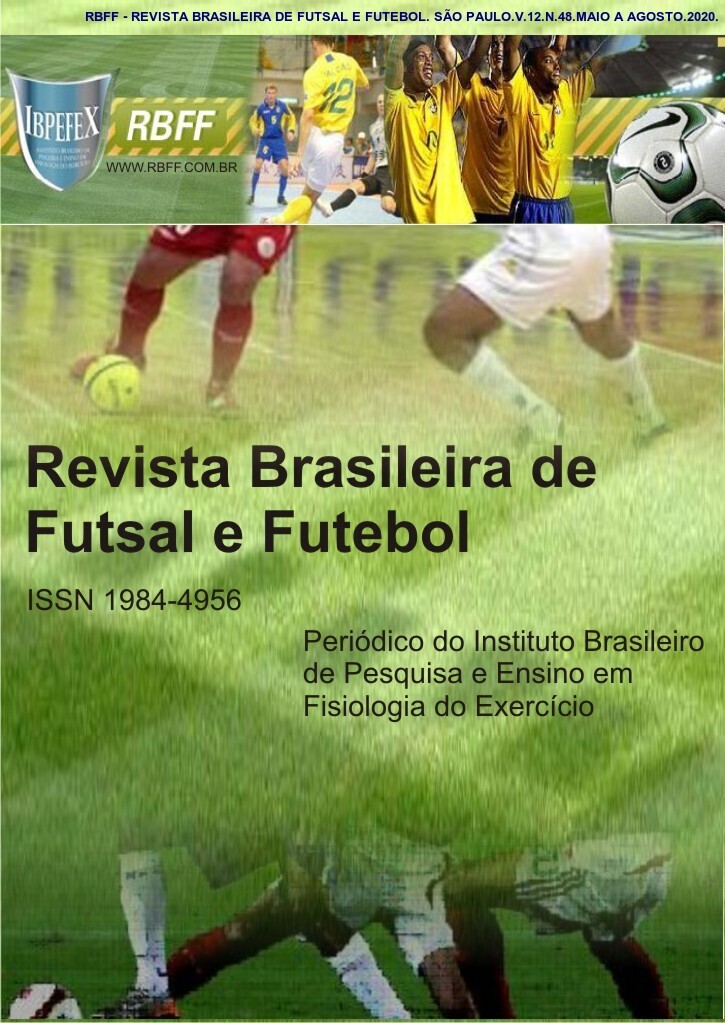Impact of the motor games on the balloon launch as a focused orientation process in the role of the porter in the beginning school and in the sports hall of Fútbol de salón (AMF) Golpy sport del Pasto municipality
Keywords:
Futsal (AMF)., Motor games Throwing ball, Targeted Orientation Goalkeeper Player School of initiation and sports trainingAbstract
This is a descriptive investigation of quasi-experimental design, pre-test / post-test type, with the purpose of establishing the impact of the motor games on the launch of the ball as a focused orientation process based on the goalkeeper player in children of the Sports Soccer Initiation and Training School (AMF) Golpy Sport of the municipality of Pasto. In addition to the above, it was also intended to diversify and strengthen learning as well as to enable multiple experiences in order to enrich cognitive, socio-emotional dimensions and forge motor expression alternatives under pedagogical guidelines. The playful nature of this research was represented by the articulation of the teaching task around the game, since being a spontaneous and pleasant activity for the child, contributed in a favorable attitude towards the specific learning of the ball throwing as education integral, trainer and developer in the children's sports process. Of the study, eighteen (18) children participated, with a biological age range between 10 and 12 years. A plan of activities of motor games selected and validated by experts was implemented, where its structure was based on a methodological orientation determined by categories and subcategories with orderly and sequential didactic reciprocity understandable, which facilitated the taxonomic organization to the participating children Specify the engine pattern to launch. The psychomotor profile battery allowed to evaluate the functional pattern of the ball throwing from seven (7) subcategories: perceptual motor behaviors (1. Laterality, 2. Balance, 3. Temporary space perception), specific dynamic coordination (4. Manual visor coordination 5. Manipulation of elements, 6. Receptions and passes) and the specific motive task of movement (7. Launch). The significant differences between the mean scores of each subcategory resulting from the pre-test and post-test evaluation after the intervention of the motor games, were established by the non-parametric Wilcoxon ranges test for related samples, where it was found that the values of p (Sig. asymptot. (bi-lateral)) between the pairs: Par 1. Laterality (,001), Par 2. Balance (,004), Par 3. Structuring (,008), Par 5. Manipulation of elements (,028), Par 6. Passes and receptions (, 000) and Par 7. Release (,000), are less than the alpha significance value (<0.05); statistical values ​​that allowed to accept the alternative hypothesis (H1) and reject the null hypothesis (Ho), concluding statistically significant difference between the pairs with a level of 5%.
References
-Asociación Mundial de Futsal (AMF, 2019). Disponible en: https://www.amfutsal.com.py/p/historia
-Campo, G. E. El juego en la educación física. Armenia: Editorial. Kinesis. 2000.
-Decroly, O.; Monchamp, E. El juego educativo: Iniciación a la actividad intelectual y motriz. España. Editorial. Morata, S.L. 2002.
-Díaz, J. T. C. Fundamentos tácticos-estratégicos del Fútbol de Salón. VIREF Revista de Educación Física. Vol. 3. Núm. 1 Supl. 1-77. 2014.
-Frosting, M. Educación del movimiento. Buenos Aires. Editorial. Panamericana. 2009.
-Godall, T.; Hospital, A. Colecciones pedagógicas corporales. Barcelona: Paidotribo. 2002.
-Hernández, J. La iniciación a los deportes desde su estructura y dinámica. España: Editorial, INDE. 2000.
-Kanap, B. Las tareas motrices y la percepción. Lodón: Editorial, Mackay. 2010.
-Loscher, A. Juegos predeportivos en grupo: Pedagogías corporales. España: Editorial, Paidotribo. 2001.
-Masuet, X. F. Juegos de iniciación a los deportes colectivos. España: Editorial, Paidotribo. 2004.
-Machado, C. A. Juegos de iniciación y formación deportiva. España: Editorial, Paidotribo. 2017.
-Sánchez, F. Estudio experimental sobre la diferencia lateral de ejecución en ejercicios sencillos de puntería. Madrid. Editorial. INEF. 1973.
-Torber, K. Educación para el desarrollo motor. México: Editorial. Pax-México. 2001.
-Weineck, J. Entrenamiento Total. España. Editorial. Paidotribo. 2005.
Downloads
Published
How to Cite
Issue
Section
License
Authors who publish in this journal agree to the following terms:
- Authors retain the copyright and grant the journal the right of first publication, with work simultaneously licensed under the Creative Commons Attribution License BY-NC which allows the sharing of the work with acknowledgment of the authorship of the work and initial publication in this journal.
- Authors are authorized to enter into additional contracts separately for non-exclusive distribution of the version of the work published in this journal (eg, publishing in institutional repository or book chapter), with acknowledgment of authorship and initial publication in this journal.
- Authors are allowed and encouraged to post and distribute their work online (eg, in institutional repositories or on their personal page) at any point before or during the editorial process, as this can bring about productive change as well as increase impact and impact. citation of published work (See The Effect of Free Access).


